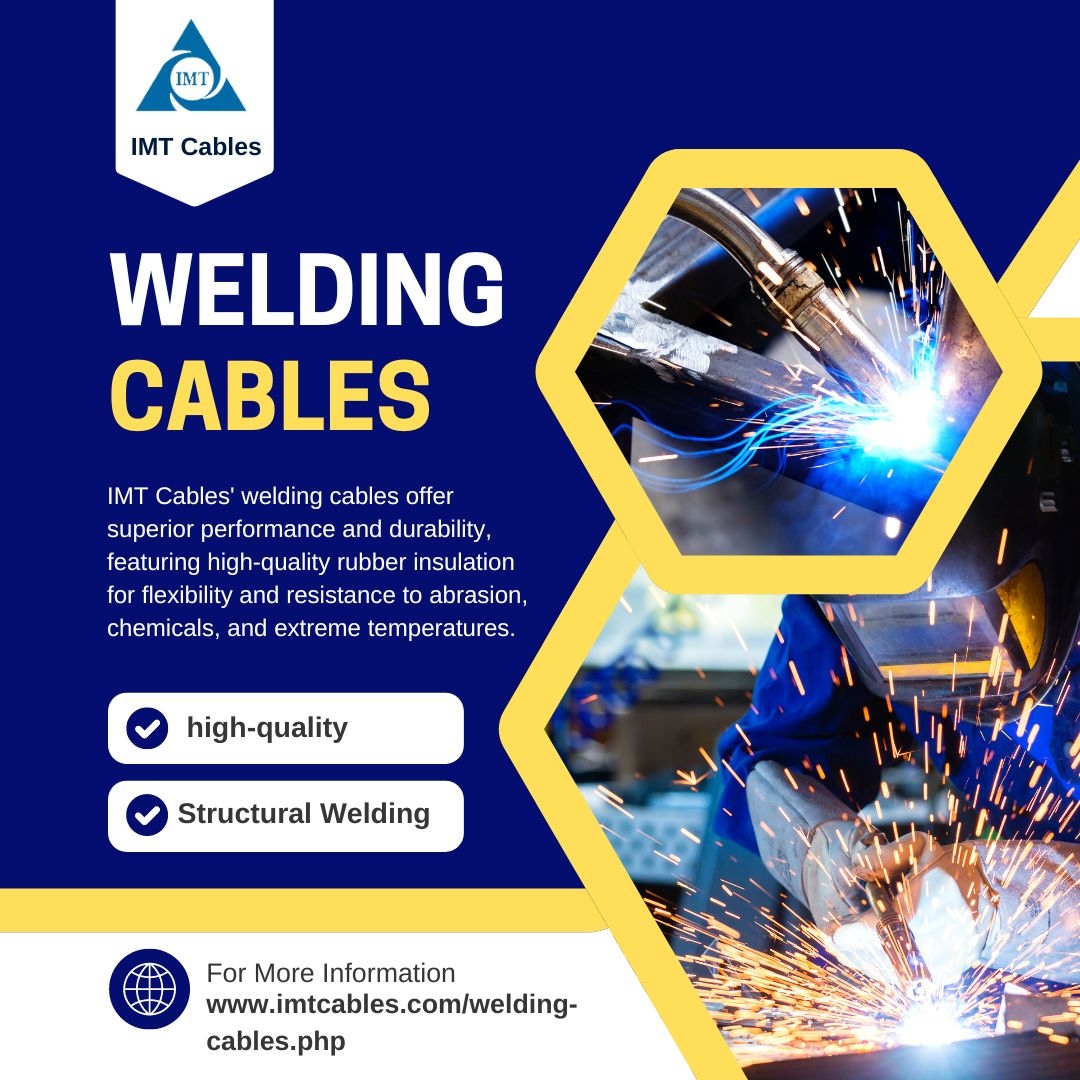Comparing Copper vs. Aluminum Welding Cables: Which is Better?

Welding cables are an essential component in any welding operation, and choosing the right material can impact performance, safety, and cost. Copper and aluminum are the two most commonly used materials for welding cables. Both have distinct advantages and disadvantages, which can make it challenging to decide which is better for your specific needs. In this blog, we’ll compare copper and aluminum welding cables, evaluating their key properties to help you make an informed decision.
1. Electrical Conductivity
Copper:
Copper is known for its excellent electrical conductivity. In fact, it has the highest electrical conductivity of any metal, making it the ideal material for power transmission. The high conductivity ensures efficient current flow, which is crucial in welding applications where reliable power transfer is essential. A copper welding cable can carry more current with a smaller gauge size compared to aluminum.
Aluminum:
Aluminum has lower electrical conductivity than copper, about 60% that of copper. This means that for the same current, an aluminum welding cable must have a larger diameter than a copper one to carry the same amount of electricity. While aluminum may require a larger cable size, it can still handle the necessary current, just with more material.
Verdict:
Copper wins in terms of electrical conductivity, but aluminum can still be a viable option for applications where a larger cable size isn’t a concern.
2. Weight and Flexibility
Copper:
Copper is a relatively dense metal, making it heavier than aluminum. This added weight can be a disadvantage, especially when cables need to be moved frequently or in applications where portability is essential. However, copper is also more flexible, which can make it easier to work with in certain installations or for longer cable runs.
Aluminum:
Aluminum is much lighter than copper, often by as much as 50%. This makes aluminum welding cables easier to handle, especially for mobile welding setups where lightweight equipment is preferred. However, aluminum is less flexible than copper, which could make it harder to maneuver in tight spaces or challenging environments.
Verdict:
Aluminum wins when it comes to weight, while copper offers more flexibility. Depending on your application, you might prioritize one over the other.
3. Cost
Copper:
Copper is generally more expensive than aluminum due to its higher material cost. For large-scale welding operations where long lengths of cable are needed, this difference can become significant. However, because copper is more efficient in conducting electricity, a smaller gauge size can be used, which somewhat offsets the higher material cost.
Aluminum:
Aluminum is less expensive than copper, making it an attractive option for those looking to reduce material costs. Even though you may need a larger cable diameter for the same conductivity, aluminum’s overall cost remains lower than copper. This makes aluminum an excellent choice for budget-conscious projects.
Verdict:
If cost is a major concern, aluminum has the advantage. However, you must also account for the need for larger cable sizes to compensate for the lower conductivity.
4. Durability and Corrosion Resistance
Copper:
Copper is highly resistant to corrosion, especially when coated. This makes it an ideal choice for welding cables exposed to outdoor or harsh environments. Additionally, copper’s durability means it can withstand wear and tear over long periods, extending the cable’s overall lifespan.
Aluminum:
Aluminum is more susceptible to corrosion, particularly in moist environments. However, aluminum cables are often coated or treated to improve their resistance to environmental factors. While less durable than copper, modern aluminum cables have become more robust thanks to these coatings.
Verdict:
Copper is the better option for durability and corrosion resistance, particularly for harsh environments where long-term exposure is a concern.
5. Heat Resistance and Safety
Copper:
Copper has a higher melting point than aluminum, making it more resistant to overheating. In welding applications, where high currents are common, copper’s superior heat resistance can enhance safety by reducing the risk of overheating or melting under heavy electrical loads.
Aluminum:
Aluminum has a lower melting point and can be more prone to heat buildup, which could lead to safety concerns in high-current applications. While this isn’t necessarily a deal-breaker, it’s something to consider, particularly in demanding welding environments.
Verdict:
Copper is safer in terms of heat resistance, making it a better choice for heavy-duty welding where overheating is a concern.
6. Applications
Copper:
Copper welding cables are ideal for heavy-duty industrial applications, high-current welding machines, and environments requiring durability and flexibility. Industries like construction, automotive, and shipbuilding often rely on copper cables for their performance and reliability.
Aluminum:
Aluminum welding cables are well-suited for light to medium welding applications. They are often used in temporary setups or mobile operations where weight and cost are prioritized over maximum conductivity and durability.
Verdict:
Copper is better for industrial, high-performance applications, while aluminum is a good choice for lighter, more mobile projects.
Conclusion: Which Is Better?
Ultimately, the choice between copper and aluminum welding cables depends on your specific requirements. If you need maximum electrical conductivity, flexibility, and durability, copper is the better choice, particularly for heavy-duty applications. However, if cost and weight are your primary concerns, aluminum is a viable alternative that offers excellent performance for less demanding welding operations.
At IMT Cables, we offer a range of high-quality copper and aluminum welding cables to suit various industrial needs. Whether you’re looking for the ultimate in performance or a cost-effective solution, our cables are designed to meet the demands of modern welding environments. Explore our range today and find the perfect welding cable for your project.
- Industry
- Art
- Causes
- Crafts
- Dance
- Drinks
- Film
- Fitness
- Food
- Games
- Gardening
- Health
- Home
- Literature
- Music
- Networking
- Other
- Party
- Religion
- Shopping
- Sports
- Theater
- Wellness
- News


